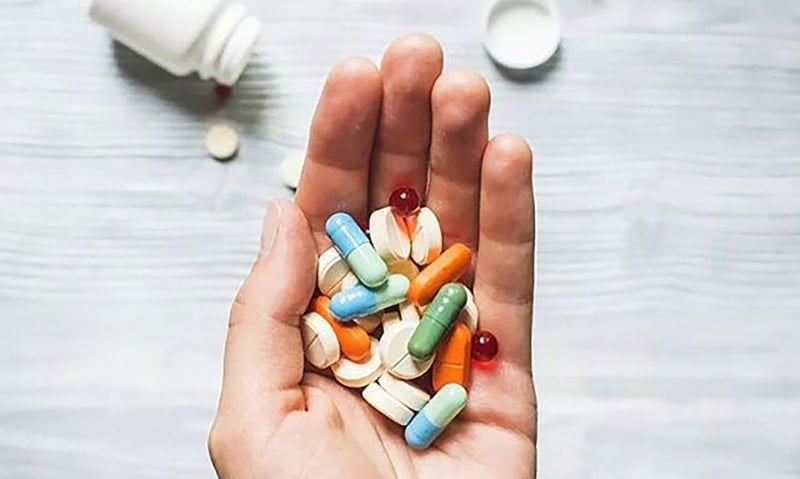The use of painkillers must follow the instructions of doctors (illustrative photo)
Pain relievers
There are two groups of over-the-counter pain relievers: Acetaminophen and nonsteroidal anti-inflammatory drugs (NSAIDs). These drugs are effective in relieving minor pain such as headaches, fever, colds, flu, arthritis, toothaches, and menstrual cramps.
Common prescription pain relievers include opioids and non-opioid medications. Non-opioid pain relievers include ibuprofen and diclofenac, which are used to relieve moderate pain.
Use as directed
Pain relievers are safe and effective when used as directed. If used incorrectly, they can cause serious harm, even death. If the medicine comes with a measuring device, use it as directed.
Do not change the dose of your pain medication without consulting your doctor. Also, do not let anyone else take your medication.
Note for some drugs
- With acetaminophen (paracetamol): Taking higher doses than recommended does not provide more pain relief and can be dangerous. Taking too much can damage the liver and lead to death. The risk of liver damage increases in people who drink alcoholic beverages while taking medications containing acetaminophen.
Be careful when giving acetaminophen to children. Infant drops may be stronger than regular children's medications. Read and follow the label directions each time you give your child a medicine. Be sure your child is given the correct dosage form for his or her age.
- With NSAIDs : taking too much can cause stomach bleeding. This risk is increased in people over 60 years old, taking blood thinners, taking steroids, having a history of stomach bleeding or ulcers, and/or having other bleeding problems. Using NSAIDs can also harm the kidneys. This risk is increased in people over 60 years old, taking diuretics, people with high blood pressure, heart disease, or pre-existing kidney disease.
- Using opioids can cause drowsiness. Do not operate machinery or drive while taking this medication, especially when you first start taking it.
Understanding active ingredients
One problem with OTC pain relievers is that products sold for different uses may have the same active ingredient. A cold and cough remedy may have the same active ingredient as a headache remedy or a prescription pain reliever.
To minimize the risk of overdose, consumers should avoid taking more than one medicine with the same active ingredient at the same time. Refer to the list of active ingredients on the product packaging or the enclosed package insert.
Talk to your pharmacist or health care professional if you have questions about nonprescription medicines, especially before taking them in combination with dietary supplements, or other nonprescription or prescription medicines.
Safe use of opioids
- Inform your healthcare provider of any history of drug abuse. All patients treated with opioids for pain should be closely monitored by their healthcare provider for signs of drug abuse or addiction and to determine when the patient no longer needs the medication.
- Follow the directions for use carefully. Opioids have significant side effects, including drowsiness, constipation, and impaired breathing that vary depending on the dose. Taking too much can cause severe respiratory depression or death. Do not chew or break the pill. This can change the rate at which the drug is absorbed and lead to overdose or death.
- Do not combine opioids with alcohol, antihistamines, barbiturates, or benzodiazepines. All of these substances slow breathing and their combined effects can lead to life-threatening respiratory depression.
PV (synthesis)
Source: https://baohaiduong.vn/su-dung-thuoc-giam-dau-an-toan-414412.html




































































![[Infographic] Traditional friendship and good cooperation between Vietnam and Egypt](https://vphoto.vietnam.vn/thumb/402x226/vietnam/resource/IMAGE/2025/8/4/9a2112b4046e4c128fdcb5403489866a)

































Comment (0)